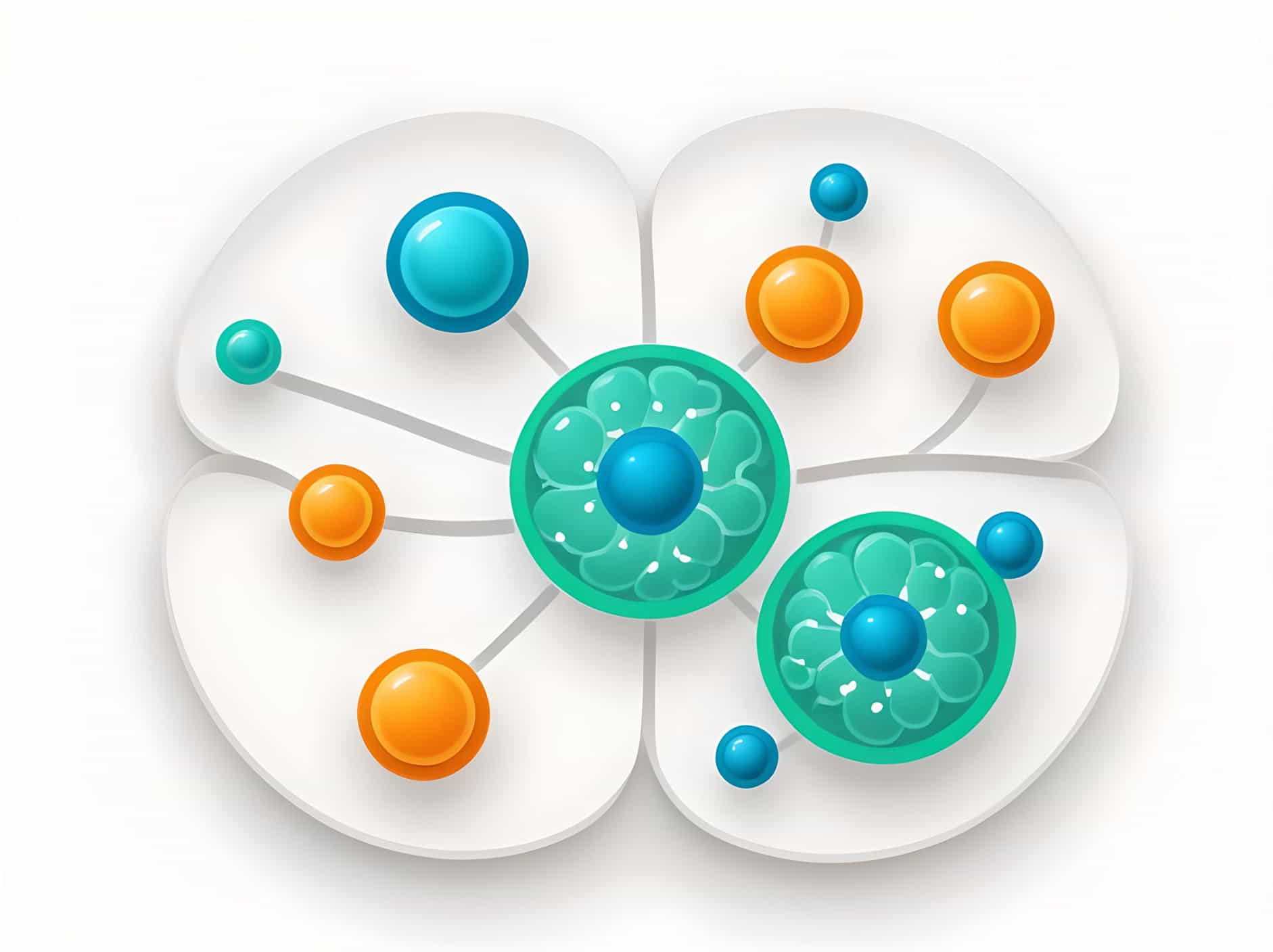
Organelles of a Eukaryotic Cell and Their Functions
Eukaryotic cells are the building blocks of complex organisms, including plants, animals, fungi, and protists. These cells are characterized by their compartmentalized structure, which allows for specialized functions and increased efficiency. Understanding the organelles within eukaryotic cells and their roles is crucial for grasping how these cells operate and contribute to the organism’s overall function. This article provides a comprehensive overview of the key organelles found in eukaryotic cells and their specific functions.
1. Nucleus
Function: The nucleus is the control center of the cell, housing the cell’s genetic material (DNA). It regulates gene expression and mediates the replication of DNA during the cell cycle.
- Nucleolus: Located within the nucleus, the nucleolus is responsible for producing ribosomal RNA (rRNA) and assembling ribosomes.
2. Mitochondria
Function: Known as the powerhouses of the cell, mitochondria generate energy through the process of oxidative phosphorylation. They convert glucose and oxygen into adenosine triphosphate (ATP), the cell’s main energy currency.
- Cristae: The inner membrane folds of mitochondria, which increase the surface area for ATP production.
3. Endoplasmic Reticulum (ER)
Function: The ER is a network of membranous tubules involved in protein and lipid synthesis.
- Rough ER: Studded with ribosomes, the rough ER is primarily involved in the synthesis and processing of proteins destined for the cell membrane or for secretion.
- Smooth ER: Lacks ribosomes and is involved in lipid synthesis, detoxification processes, and calcium ion storage.
4. Golgi Apparatus
Function: The Golgi apparatus modifies, sorts, and packages proteins and lipids for secretion or for delivery to other organelles. It is often compared to a postal system within the cell.
5. Lysosomes
Function: Lysosomes are the cell’s digestive system. They contain hydrolytic enzymes that break down macromolecules, old cell parts, and foreign invaders like bacteria.
- Autophagy: The process by which lysosomes degrade and recycle cellular components.
6. Peroxisomes
Function: Peroxisomes contain enzymes that detoxify harmful substances, metabolize fatty acids, and produce hydrogen peroxide, which is then broken down by the enzyme catalase.
7. Ribosomes
Function: Ribosomes are the sites of protein synthesis. They translate messenger RNA (mRNA) into polypeptide chains.
- Free Ribosomes: Found floating in the cytoplasm, these ribosomes synthesize proteins that function within the cytosol.
- Bound Ribosomes: Attached to the rough ER, these ribosomes synthesize proteins destined for secretion or for use in lysosomes or the cell membrane.
8. Cytoskeleton
Function: The cytoskeleton provides structural support, facilitates cell movement, and aids in intracellular transport.
- Microfilaments: Composed of actin, they support cell shape and are involved in cell movement and division.
- Intermediate Filaments: Provide mechanical support and help maintain cell shape.
- Microtubules: Hollow tubes that facilitate the movement of organelles, chromosomes, and the cell itself.
9. Chloroplasts (in Plant Cells)
Function: Chloroplasts are the sites of photosynthesis in plant cells. They convert light energy into chemical energy stored in glucose.
- Thylakoids: Membrane-bound compartments where the light-dependent reactions of photosynthesis occur.
- Stroma: The fluid surrounding the thylakoids, where the light-independent reactions (Calvin cycle) take place.
10. Vacuoles
Function: Vacuoles are storage organelles. In plant cells, the central vacuole stores water, nutrients, and waste products and helps maintain turgor pressure.
- Contractile Vacuoles: Found in some protists, these vacuoles expel excess water to maintain osmotic balance.
11. Plasma Membrane
Function: The plasma membrane is a selectively permeable barrier that controls the entry and exit of substances, facilitates communication between cells, and helps maintain the cell’s internal environment.
- Phospholipid Bilayer: The fundamental structure of the plasma membrane, consisting of two layers of phospholipids.
- Proteins: Embedded in the bilayer, these proteins assist in transport, signal transduction, and cell recognition.
12. Cell Wall (in Plant Cells and Fungi)
Function: The cell wall provides structural support and protection. In plant cells, it is primarily composed of cellulose, while in fungi, it is made of chitin.
- Primary Cell Wall: The flexible layer formed during cell growth.
- Secondary Cell Wall: A more rigid layer that provides additional strength and support.
Eukaryotic cells are complex and highly organized, with each organelle playing a specific role in maintaining the cell’s functions and overall health. Understanding these organelles and their functions is fundamental to the study of biology and helps explain how multicellular organisms operate. Whether you are a student, educator, or simply a curious individual, appreciating the intricacies of eukaryotic cells enhances your knowledge of life at its most fundamental level. By delving into the structure and function of each organelle, we gain insights into the remarkable efficiency and adaptability of eukaryotic cells.